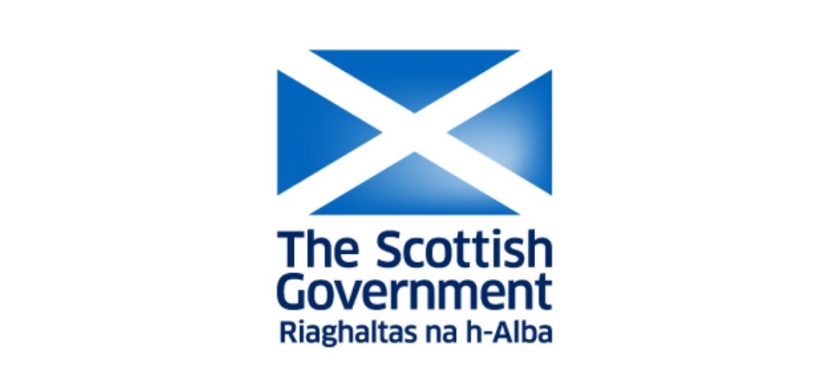In May 2018 the Scottish Government published their first ‘Position Statement’ on the implementation of the United Nations Convention on the Elimination of All Forms of Discrimination Against Women
United Nations Convention on the Elimination of All Forms of Discrimination against Women
Article I
For the purposes of the present Convention, the term “discrimination against women” shall mean any distinction, exclusion or restriction made on the basis of sex which has the effect or purpose of impairing or nullifying the recognition, enjoyment or exercise by women, irrespective of their marital status, on a basis of equality of men and women, of human rights and fundamental freedoms in the political, economic, social, cultural, civil or any other field.
The United Nations clearly defines “discrimination against women” as being ” on the basis of sex “. The UK has ratified this convention and has protected ‘Sex’ within the Equality Act 2010. To assist in the implementation of promoting equalities of people who share one of the nine protected characteristics the Equality Act 2010 (Specific Duties) (Scotland) Regulations 2012 introduced certain duties for public authorities. One of these being to consider relevant evidence and assess the impact of any new policy or practice against each of the protected characteristic it may affect, known as an Equality Impact Assessment (EQIA).
The Scottish Government publish details of the EQIA’s they have performed on their website and over the last 12 months there are forty-one listed. Many of them aren’t explicit on what the evidence or assessments were for each of the protected characteristic and many of them are so vague that they don’t even make mention of the protected characteristics. It’s therefore impossible to tell whether or not full proper Impact Assessments were performed in relation to the protected characteristic Sex. In addition to these poorly detailed or vague EQIA’s there are many that incorrectly refer to Gender as a protected characteristic when they presumably mean Sex or have grouped characteristics together e.g. Sex and Gender Reassignment. It is these EQIA’s that I have listed below and this list unequivocally reveals that the Government have wrongly interpreted the protected characteristics within at least eleven of the forty-one EQIA’s performed within the last 12 months.
Equality Impact Assessments (EQIA’s)
1/ EQIA STEM Bursary
https://www.gov.scot/publications/stem-bursary-equality-impact-assessment/pages/1/
Incorrectly Names Gender as a protected characteristic, replacing Sex
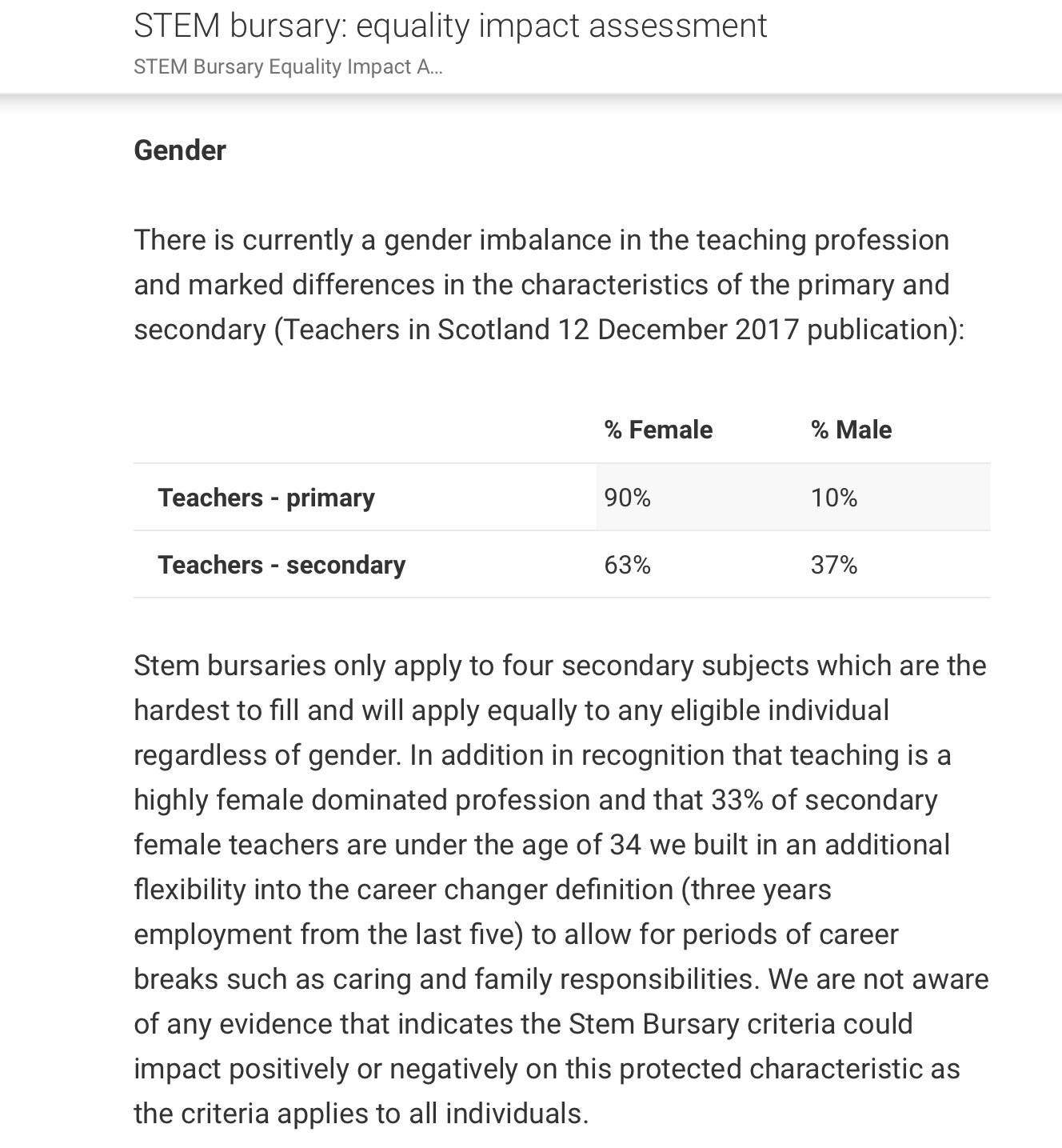
2/ EQIA Smarter Workplaces
https://www.gov.scot/publications/smarter-workplaces-equality-impact-assessment-summary/
Groups together Protected Characteristics Sex and Gender Reassignment regarding the implementation of mixed sex toilets
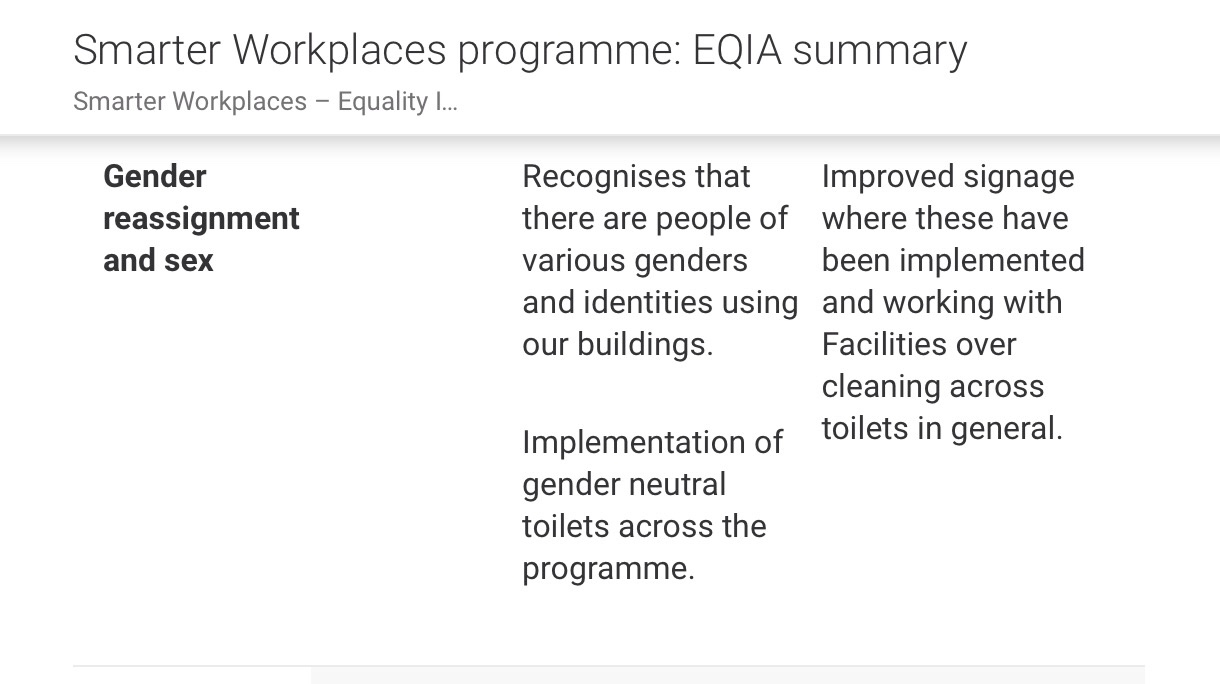
3/ EQIA Census Amendment (Scotland)(Bill)
Groups together Protected Characteristics Sex and Gender Reassignment regarding introduction of a non-binary sex question.
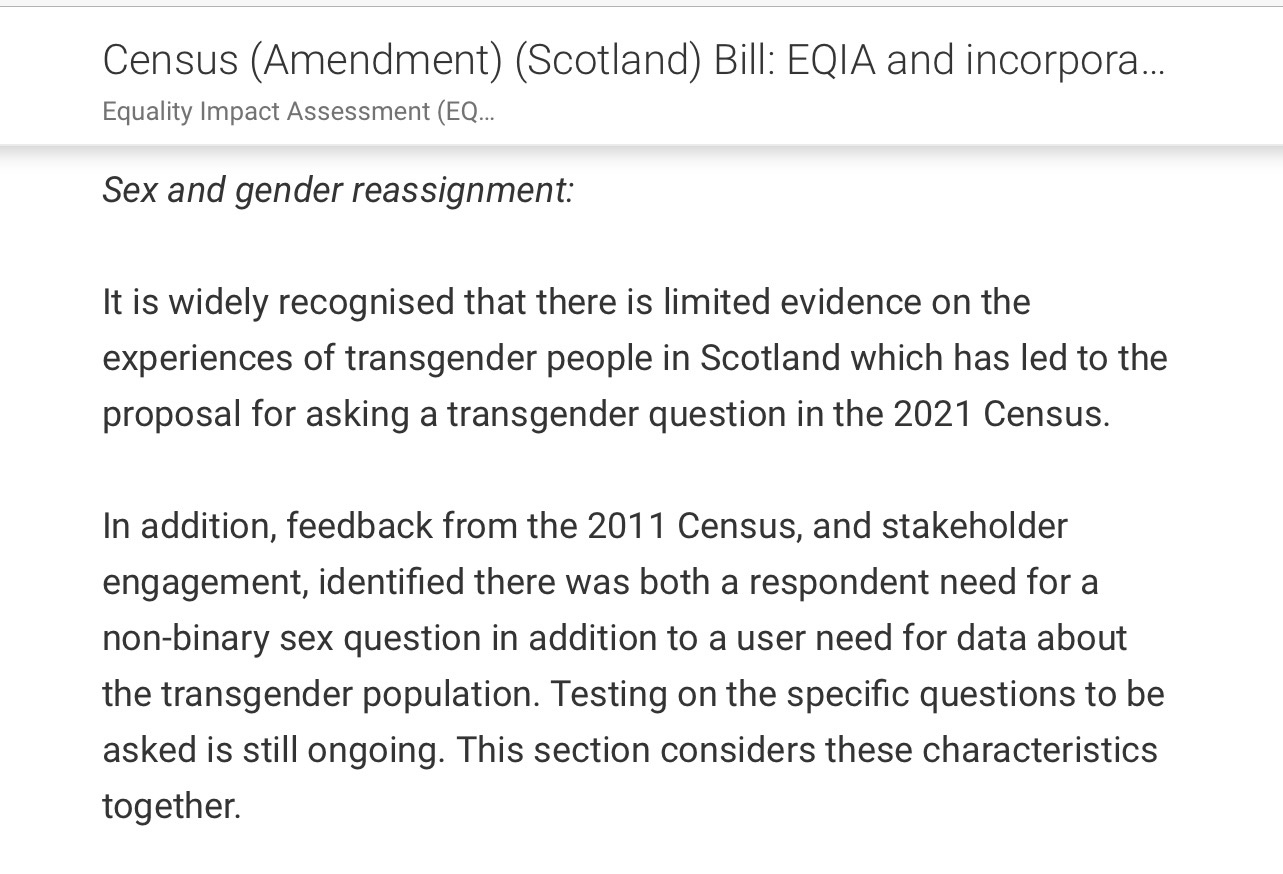
4/ EQIA Scotlands Forestry Strategy
Incorrectly Names Protected Characteristic ‘Sex’ as Sex/Gender
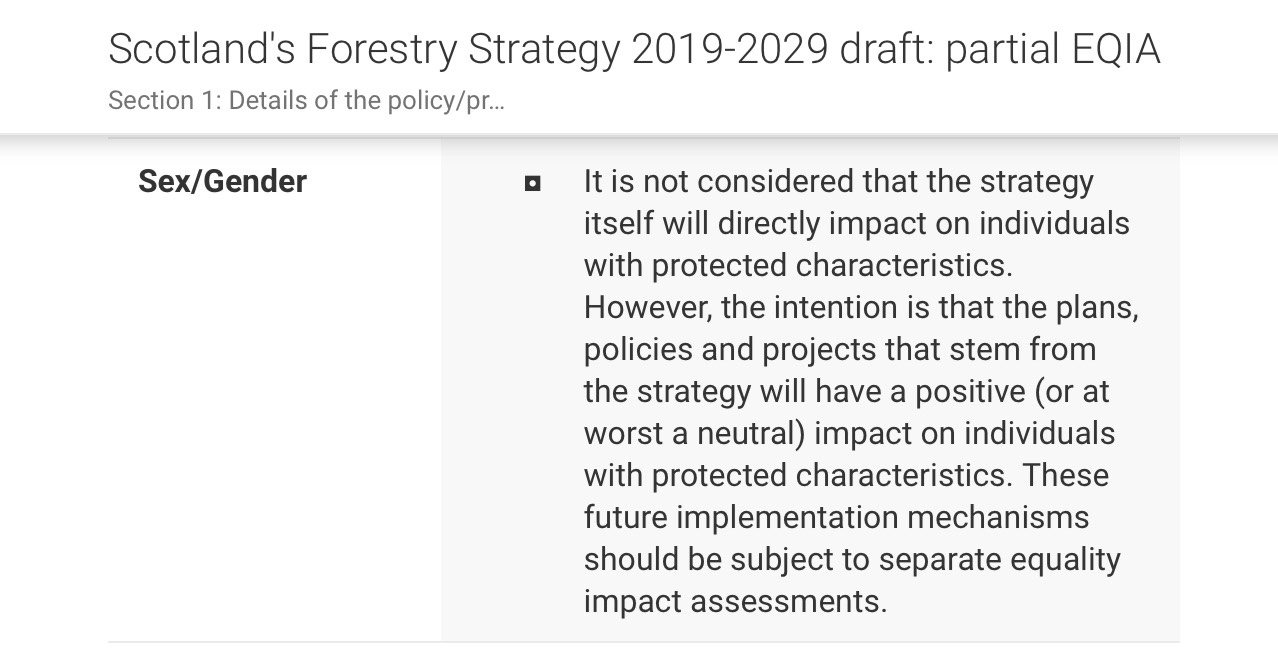
5/ EQIA Review funding postgraduate distance learning students
https://www.gov.scot/publications/review-funding-postgraduate-distance-learning-students-eqia/
Incorrectly names Gender as a protected characteristic
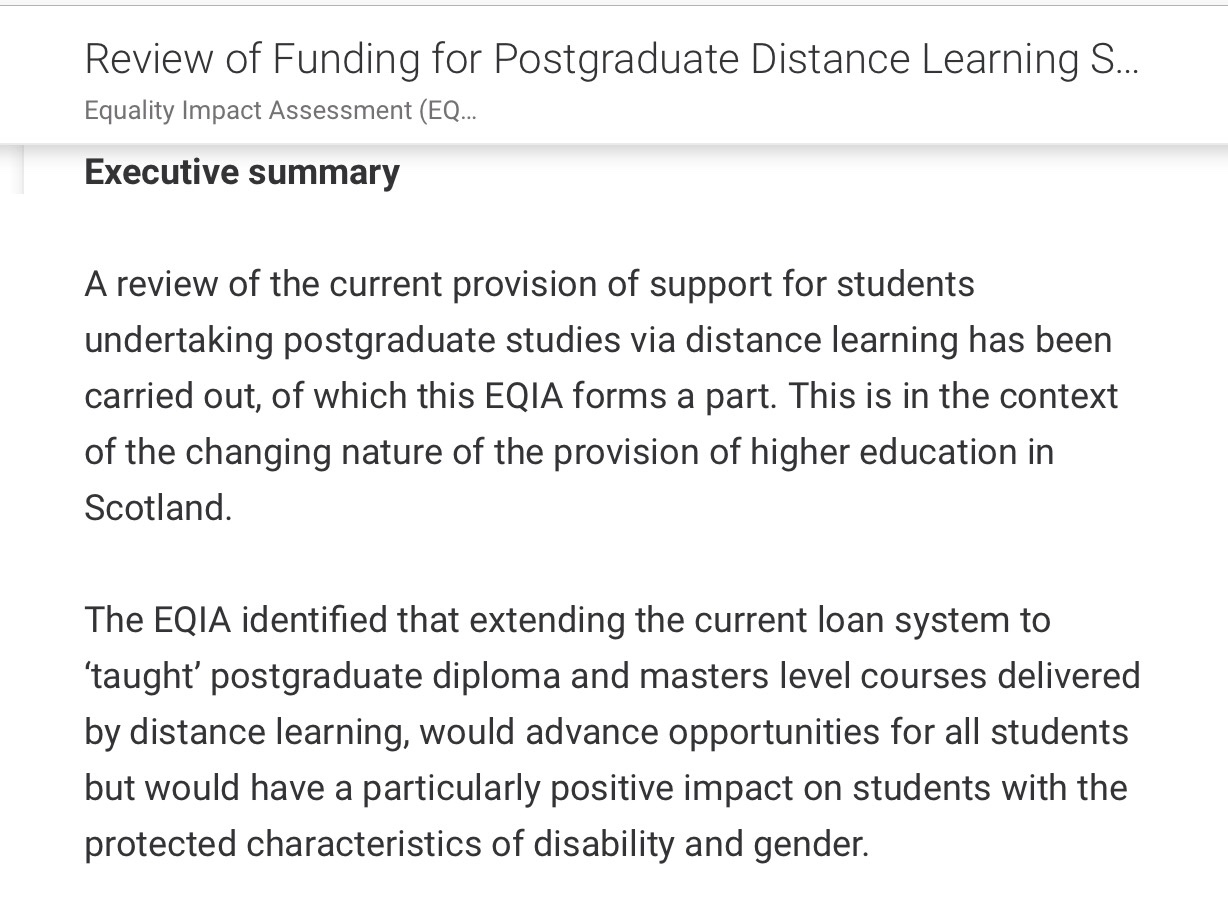
6/ EQIA Scottish Attainment Challenge
Incorrectly names Gender as a protected characteristic
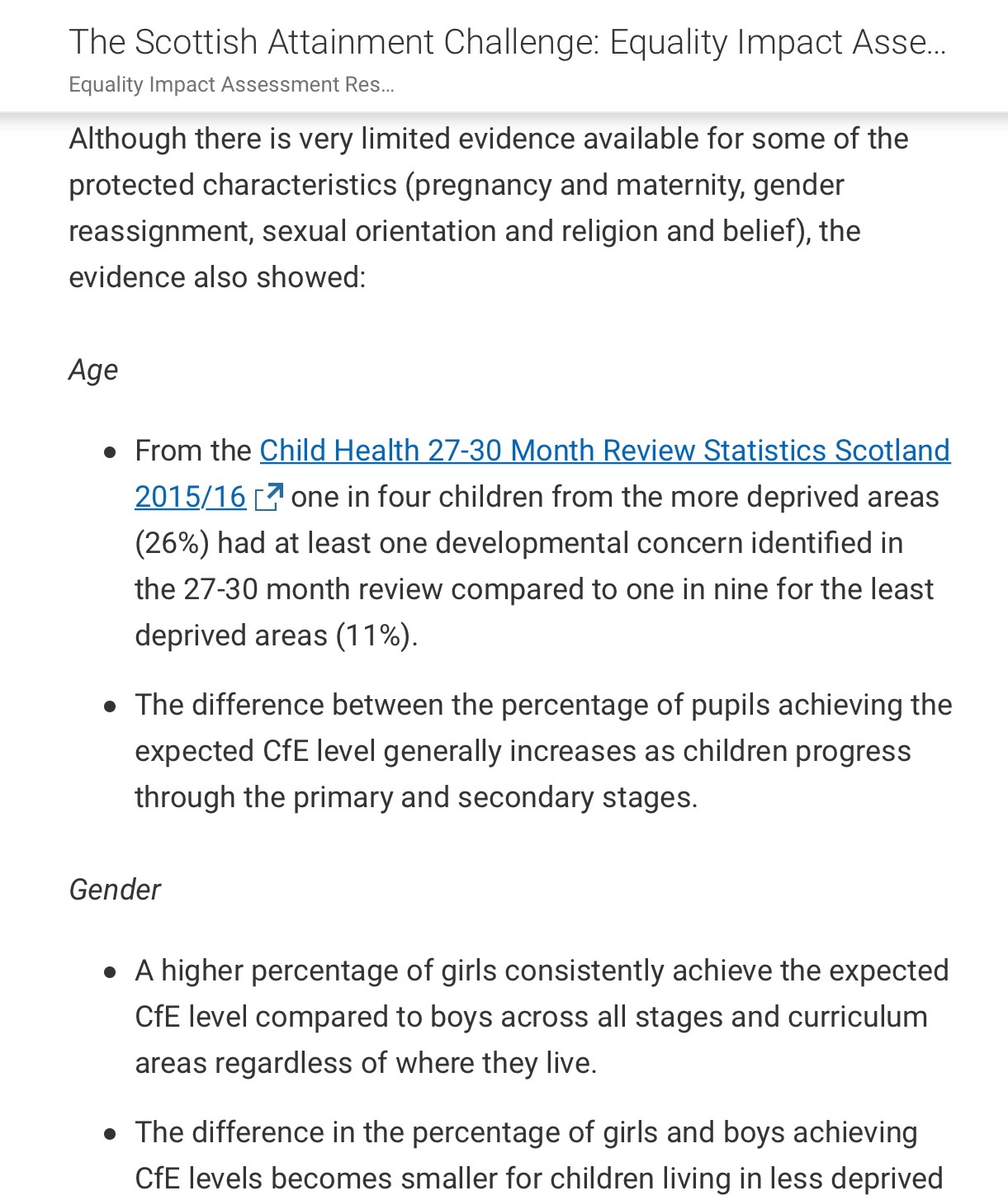
7/ EQIA Fair Start Scotland
https://www.gov.scot/publications/fair-start-scotland-equality-impact-assessment/
Incorrectly names Gender as a protected characteristic
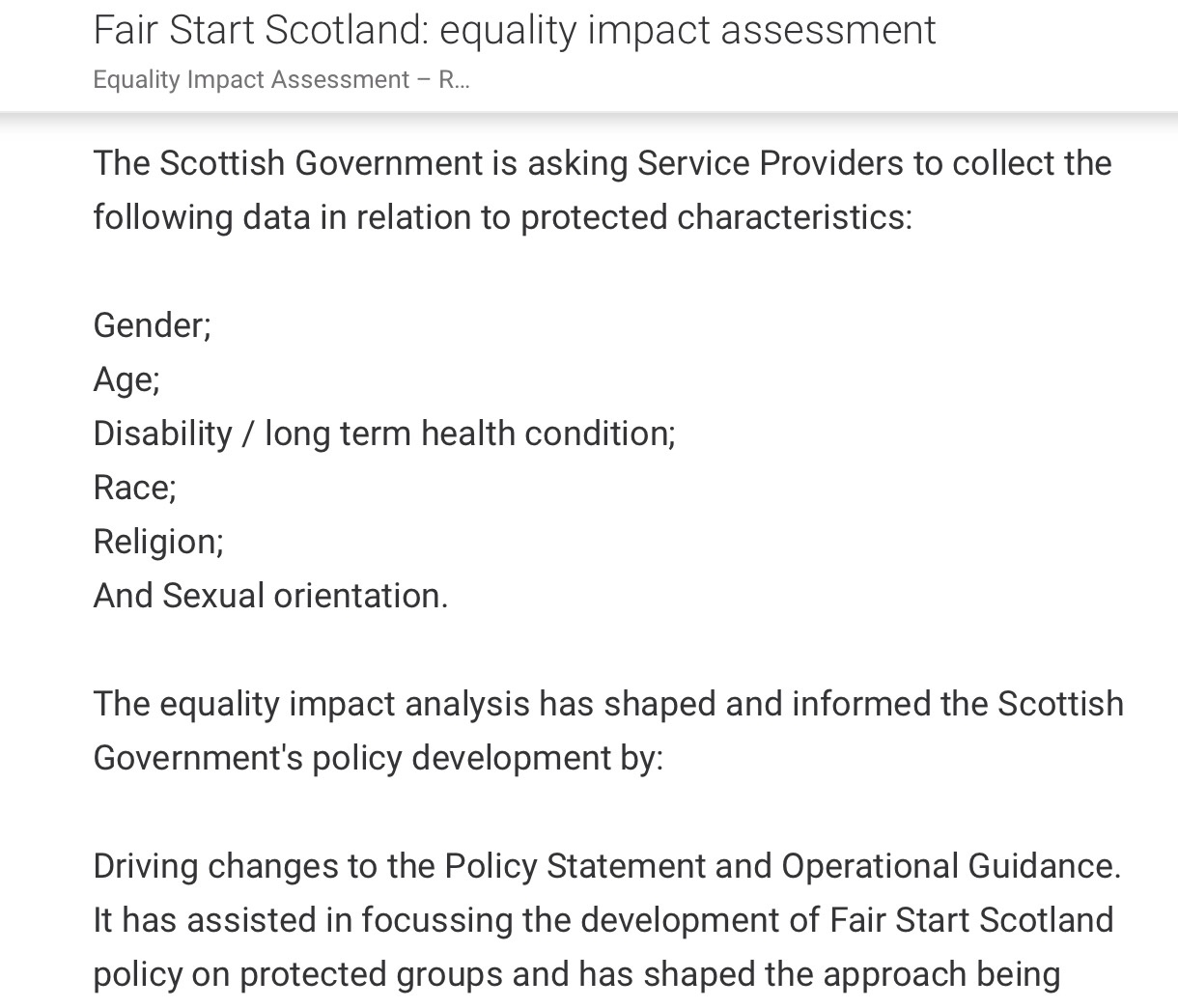
8/ EQIA Carers Scotland Act 2016
https://www.gov.scot/publications/carers-scotland-act-2016-equality-impact-assessment/
Incorrectly names Gender as a protected characteristic
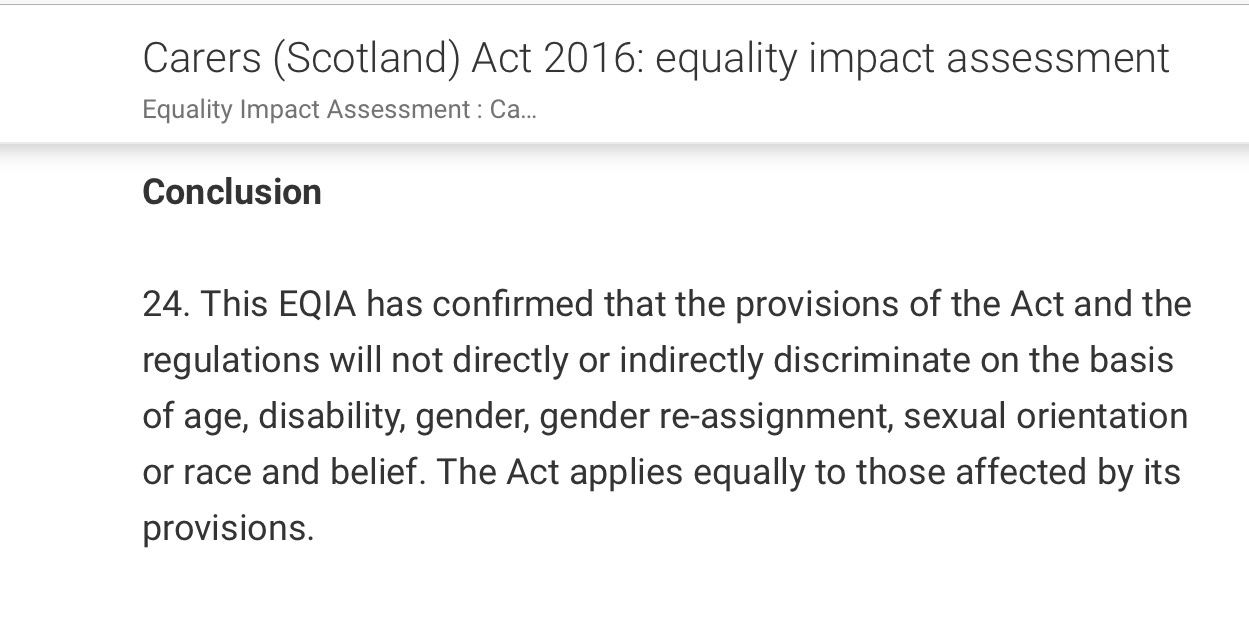
9/ EQIA Scottish Court Fees Scotland
https://www.gov.scot/publications/equality-impact-assessment-court-fees-scotland-2018-21/
Incorrectly names Gender as a protected characteristic
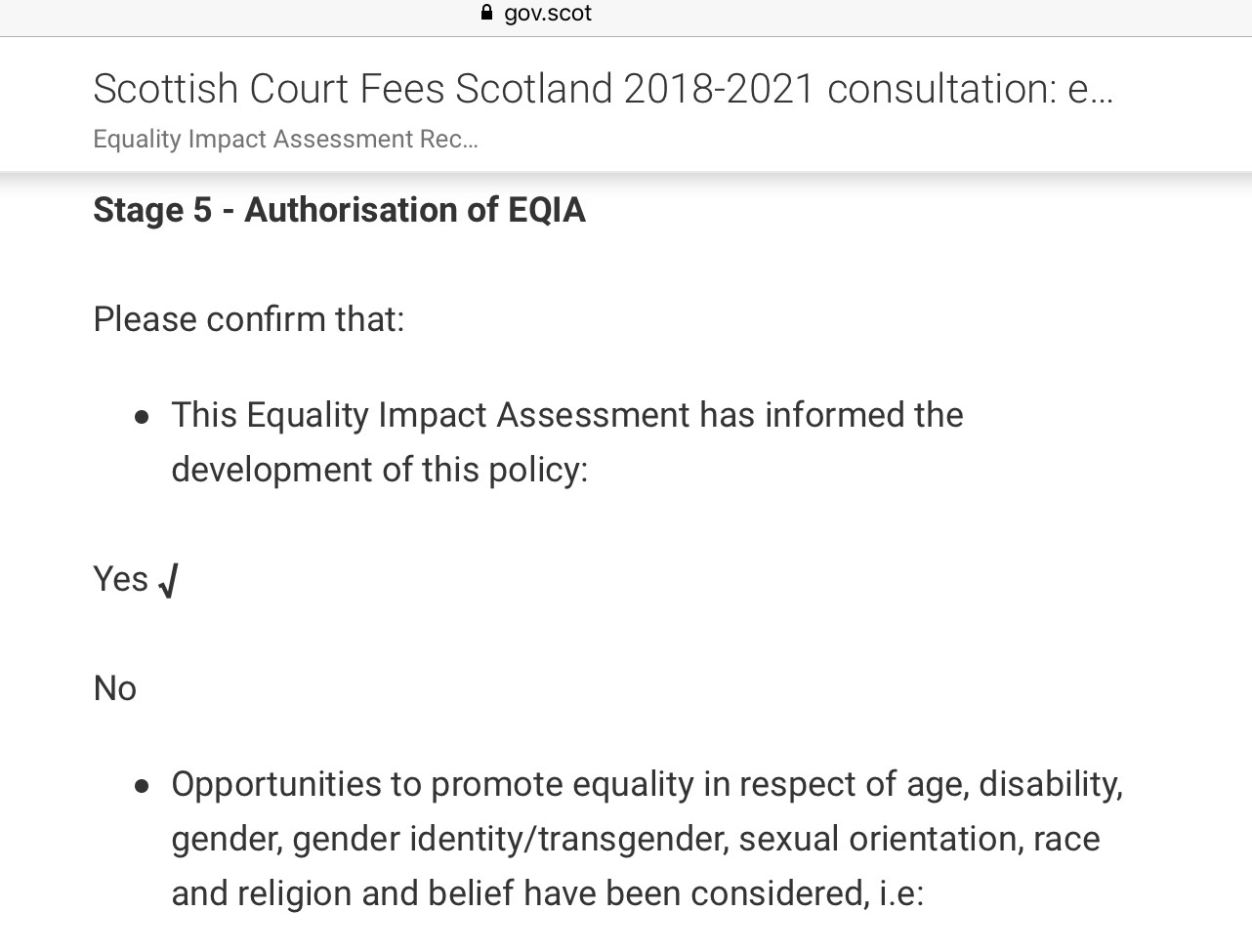
10/ EQIA Police Act 1997 – Remedial Order 2018
Incorrectly names Gender as a protected characteristic
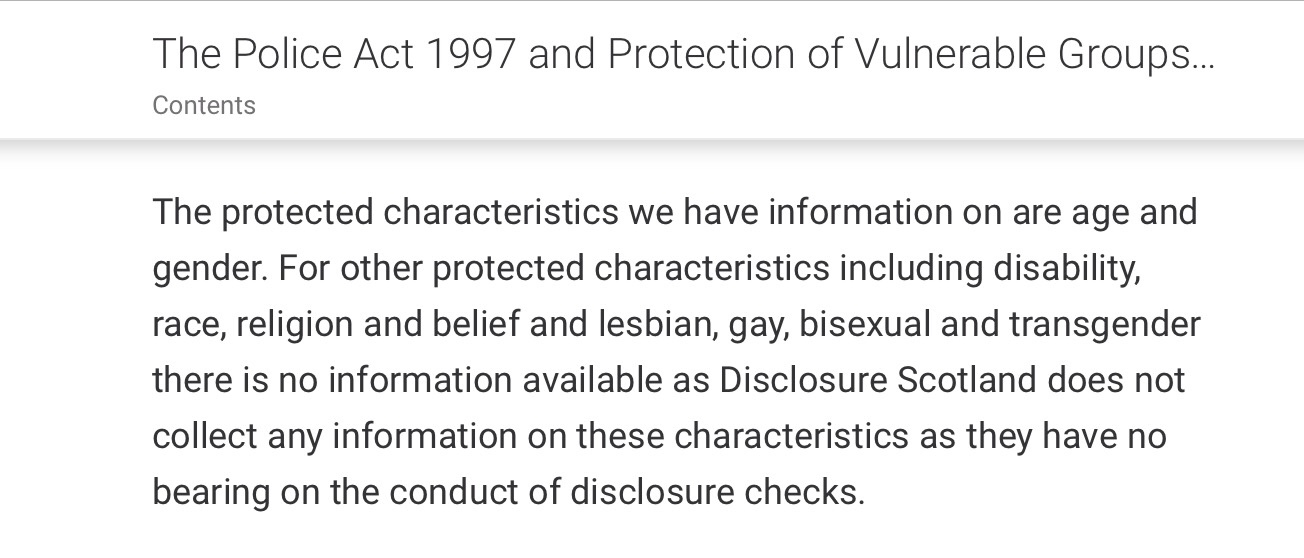
11/ EQIA Public Sector Pay Policy 2018/19
https://www.gov.scot/publications/public-sector-pay-policy-2018-2019-equality-impact-assessment/
Incorrectly refers to Gender as a protected characteristic
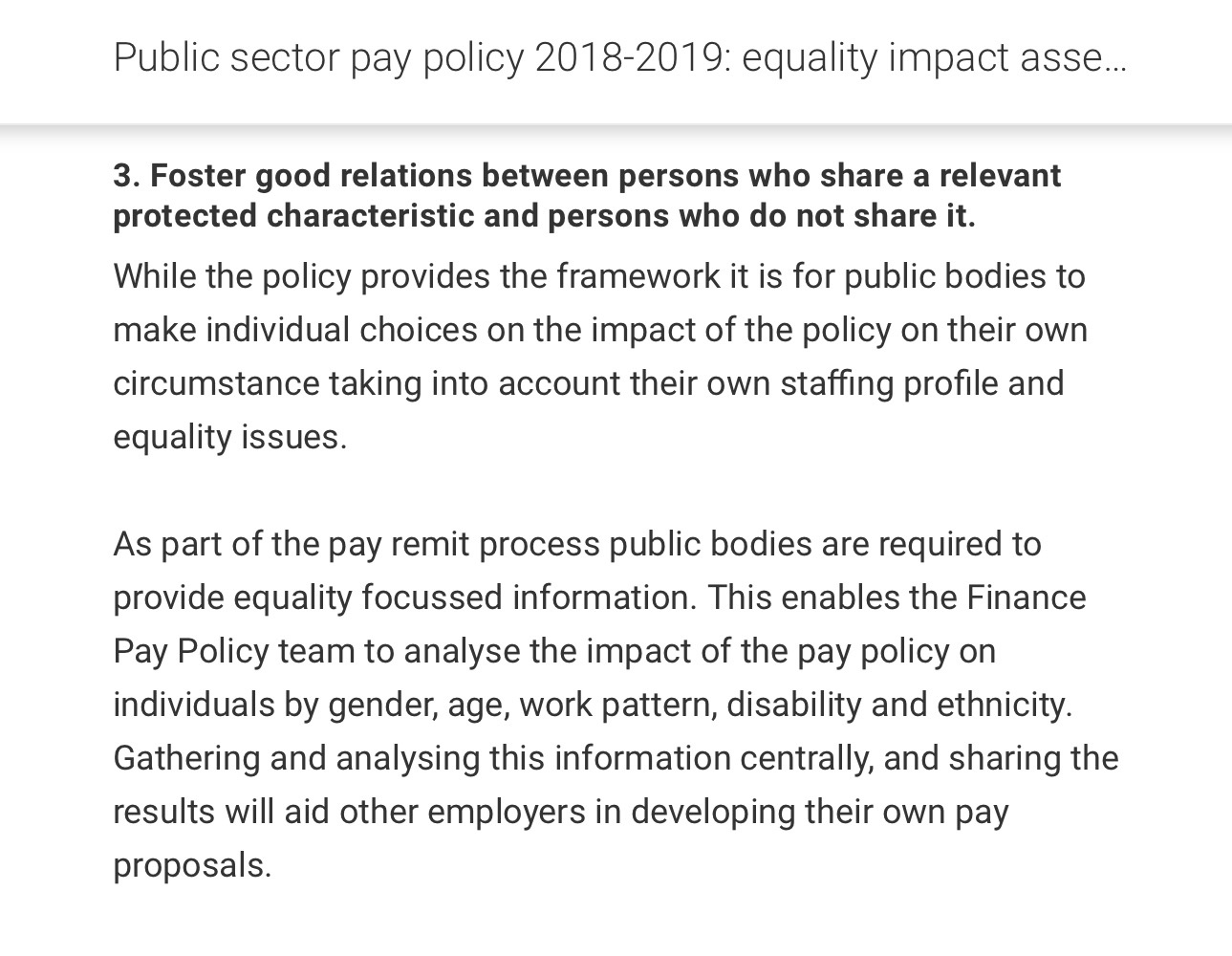
Further publications
But this conflation of Sex and Gender isn’t restricted to just EQIA’s as this gross error appears across a number of documents and publications on the website. Here are a few examples:
1/ Scottish Draft Budget 2017/18 Equality Statement
Incorrectly states both Gender and Gender Identity as protected characteristic. The protected characteristic Sex has been excluded.
https://www.gov.scot/publications/equality-statement-scottish-draft-budget-2017-18/pages/3/
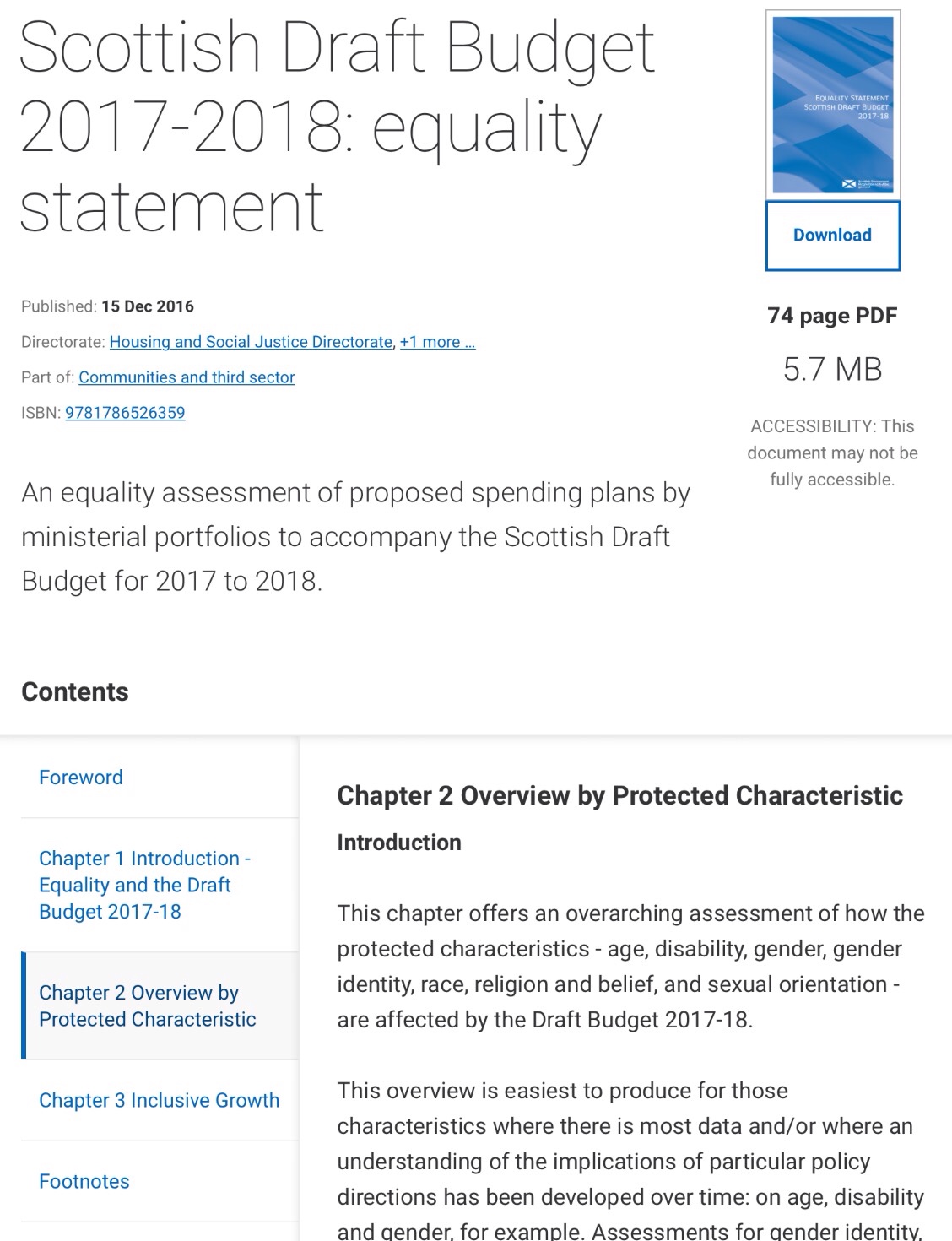
2/ 2010 Core Question Review
The review confirmed that ‘Gender’ would be retained as a core question, explaining that it is one of the protected characteristics within the Equality Act 2010. Gender isn’t a protected characteristic.
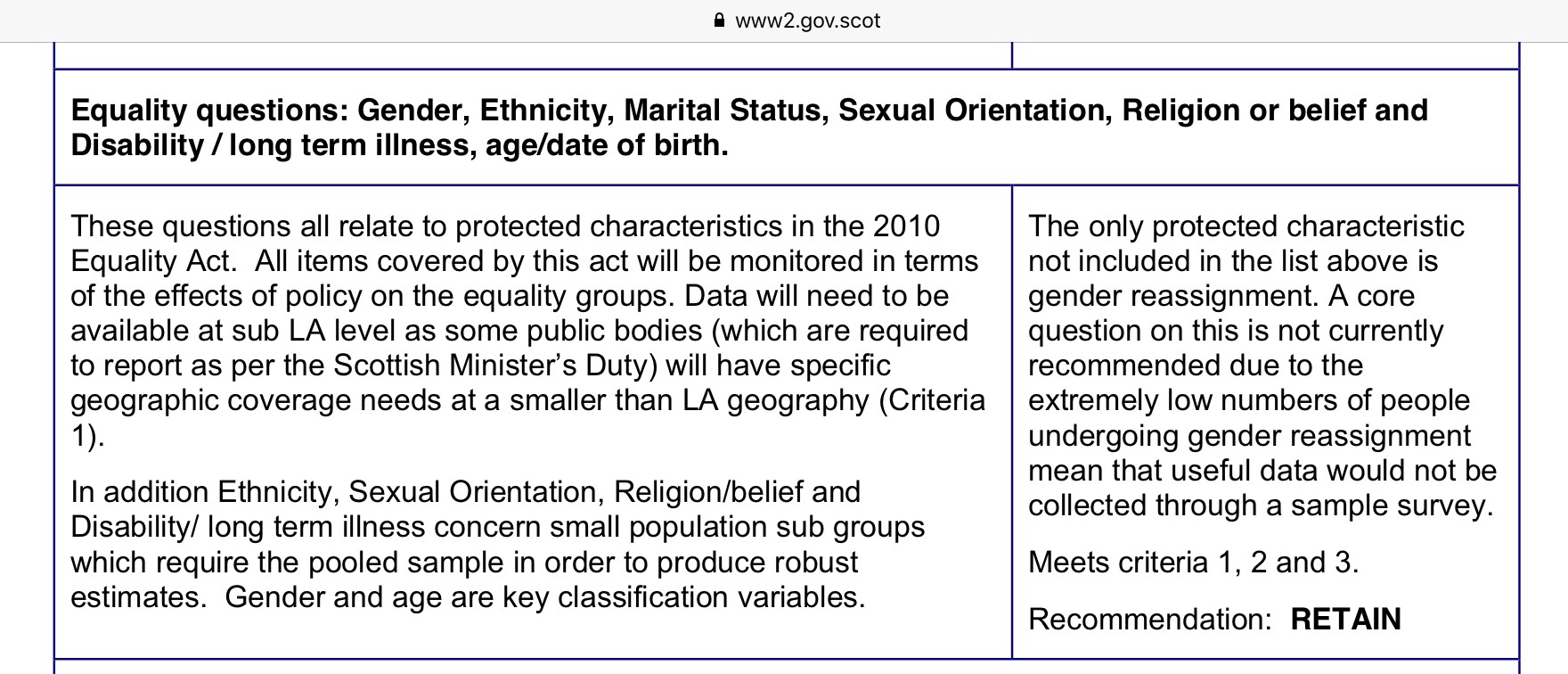
3/ Collecting Equality Information: Guidance for asking questions on Gender
“The Equality Act 2010 protects people from discrimination because of gender.”
“The duty covers nine protected characteristics, including gender”
The word being used here should be ‘Sex’ not ‘Gender’, this is all the more important as this guidance document for the protected characteristic Sex then diverts away and discusses Gender Identity instead, with links to Scottish Trans Alliance.
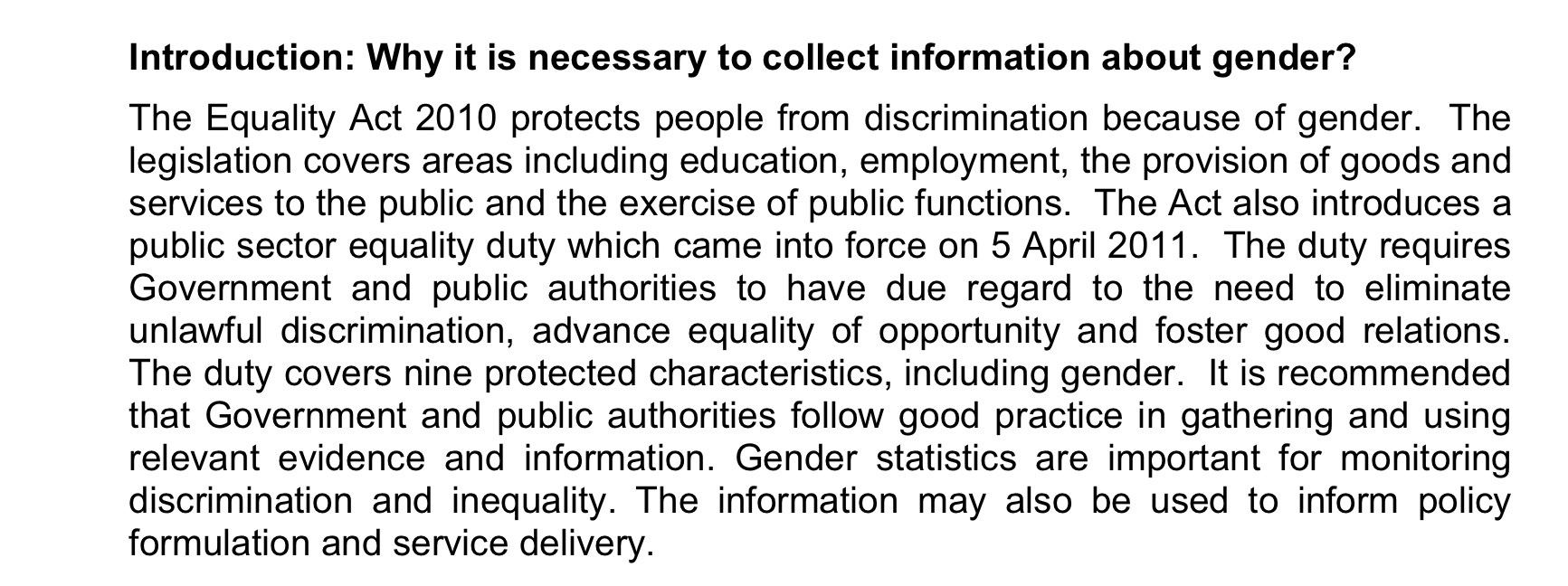
4/ Equality Funding 2017-2020
Incorrectly names Gender as a protected characteristic
https://www.gov.scot/publications/equality-national-intermediary-bodies-funding-2017-2020/
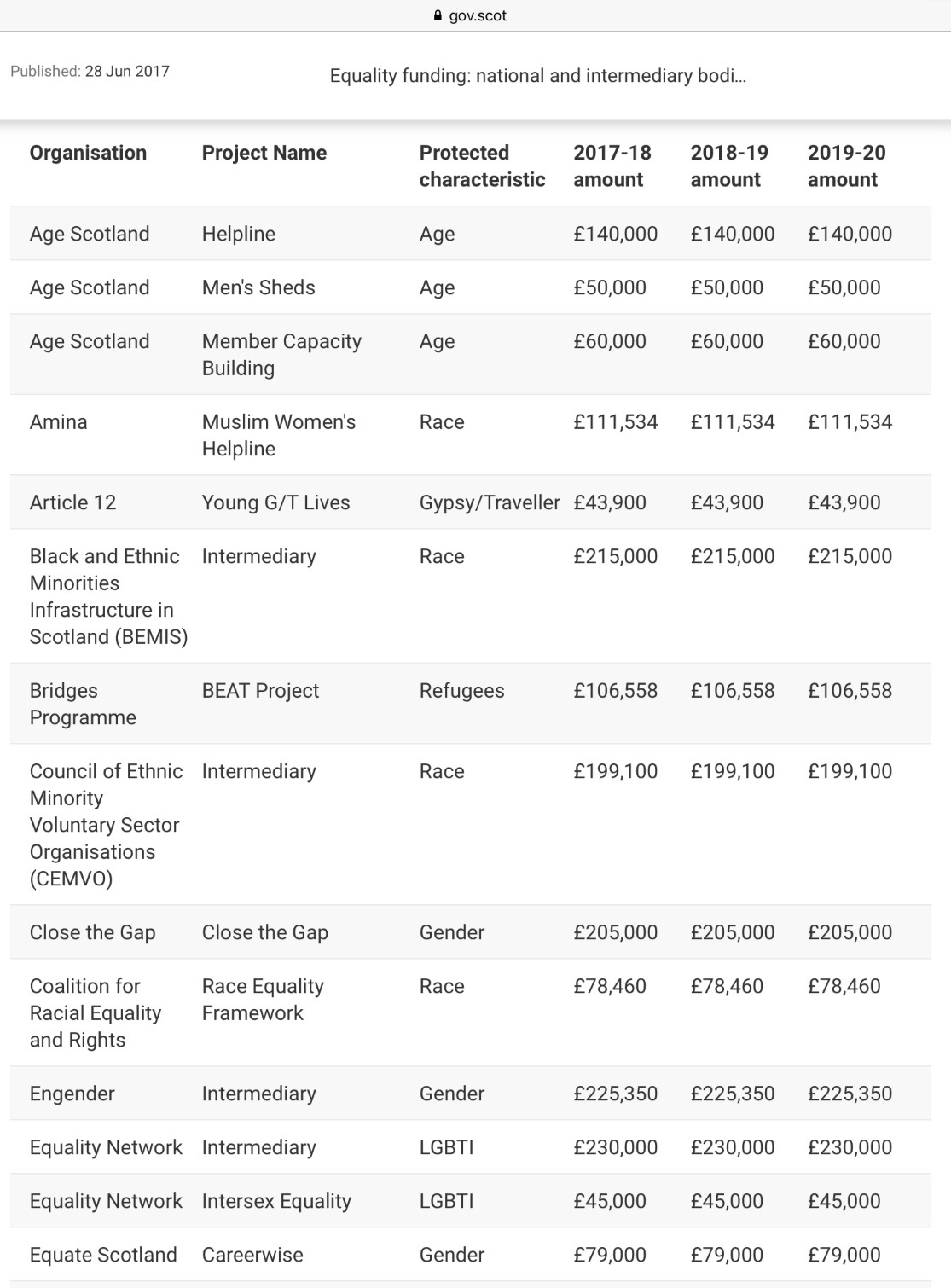
These examples are just a very small selection of publications on the government website that wrongly quote the Equality Act 2010 protected characteristics.
Is it important though? Are they just using the Gender as a euphemism for Sex? It’s really important for us to be able to trust that the government actually knows there is a difference between Sex and Gender, and by using the correct language in these publications would go a long way to reassuring us.
On one hand they acknowledge that women and girls are discriminated against because of our sex (UN CEDAW and Equality Act 2010) but then when introducing legislation to target the under-representation of females on public boards they change the definition of women to include individuals who are both biologically and legally male.
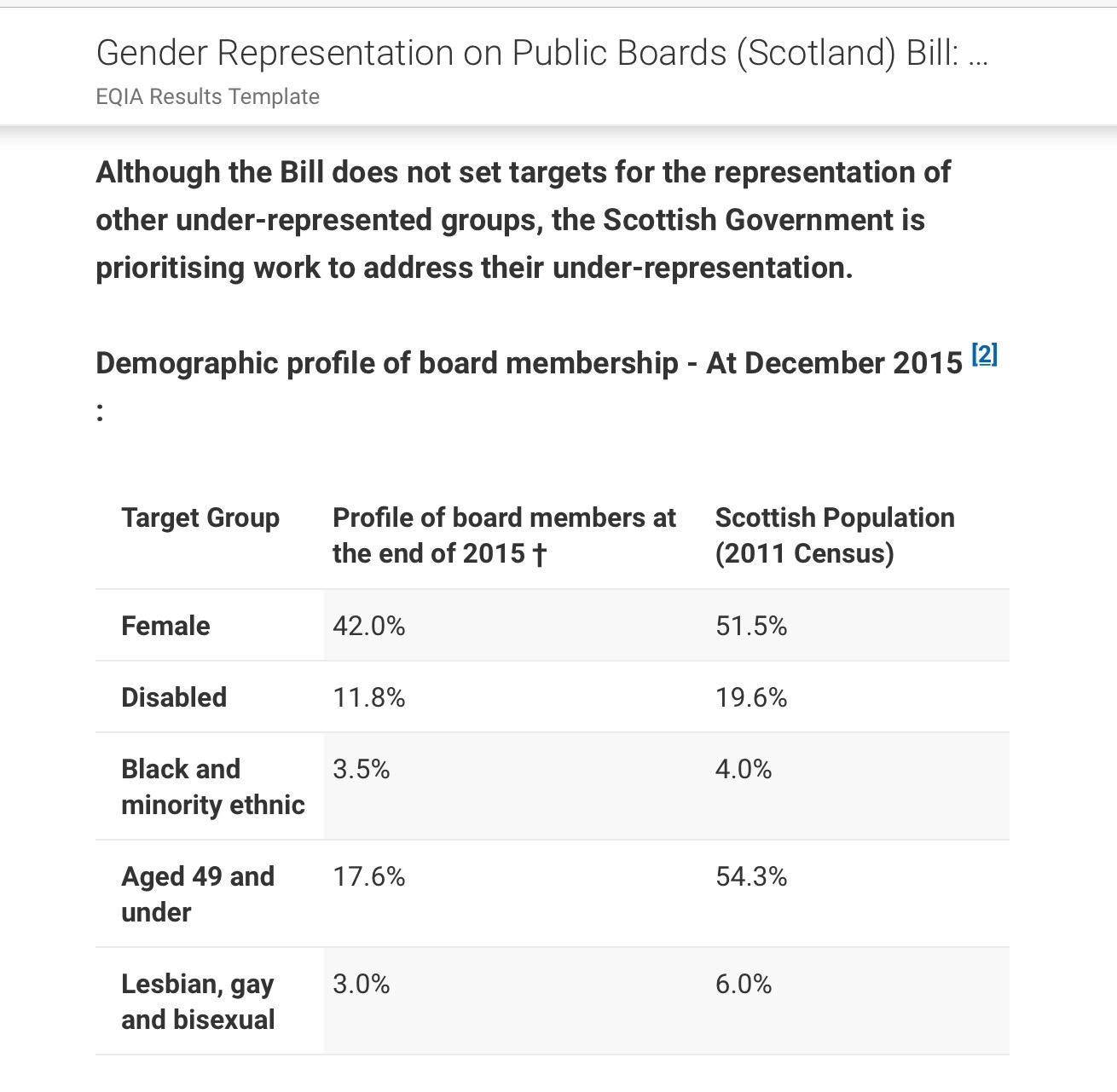
So what exactly is going on? Are there two competing camps operating within the Government’s Equality Unit? One that wants to uphold sex based protections and another that wants to conflate sex with gender.
This can’t be allowed to continue any longer. Statements like the one below where The Act says one thing but in practice another happens is an extremely neglectful position. If wrongful practice is occurring then rather than meekly accepting it, this should instead flag up that stringent guidance is urgently needed across all sectors.
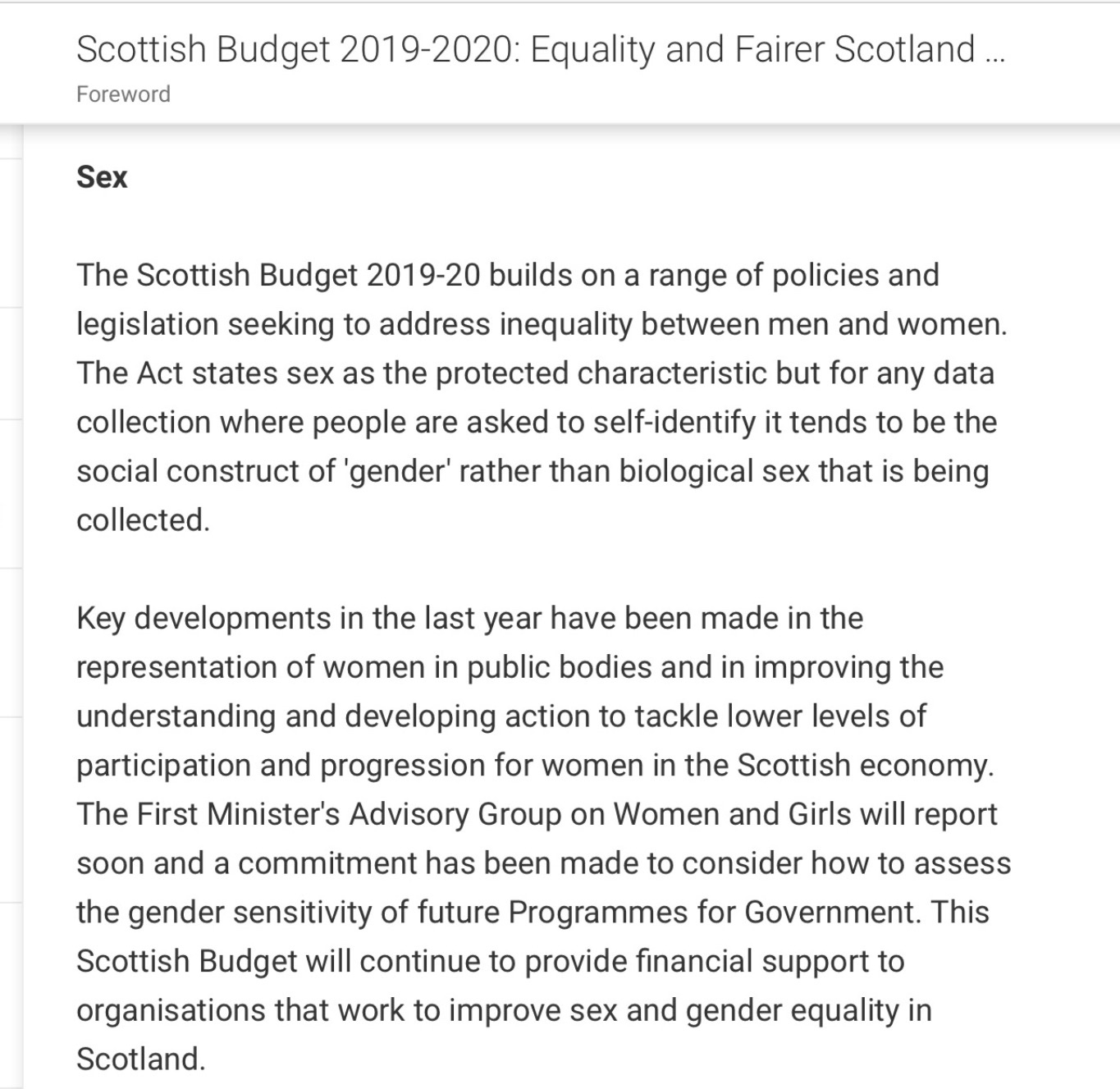
Occurring in public sectors all across the country
Public Authorities across Scotland regularly replace the protected characteristic Sex with Gender, so it’s essential the government lead by example and ensure that they themselves are using the legally correct terminology. Failing to do so undermines the discrimination, harassment and victimisation sex based protections that are afforded to women and girls, as per the Equality Act 2010. Each and every public authority in Scotland is required to abide by this equality law, yet this blatant and widespread disregard continues without any apparent policing or enforcement from the institution tasked to promote equality in Scotland, the Equality and Human Rights Commission.
Individual members of the public have been writing tirelessly to our Councillors, MSP’s, Minister’s etc highlighting this growing and worrying pattern amongst the Public Authorities. You would expect that having been alerted to these legal failures the authorities would be embarrassed and immediately rectify these gross errors but, rather shockingly, more often than not no action is taken. We are either ignored, or offered explanations as to why there is a preference towards ‘gender’ rather than ‘sex’ and then continue to completely disregard the law. We are also told that if we are still not satisfied then we can seek a judicial review with the authority directly or via the EHRC. But, really, who has the money for that?
This is the major flaw here, what is the point of an equality law if members of the public have no recourse against these public authorities who knowingly fail to follow their legal requirements, and on top of that most of our elected representatives don’t seem to be prepared to help much either.
And as if this isn’t a bad enough situation any good work the government does, like implementing the UN CEDAW or the Equally Safe project, will then be overlooked because we have no trust that those responsible for rolling them out will either understand or respect the fact our legal protections are fundamentally provided on the basis of our sex.
What exactly is the position of the Scottish Government, are they now prioritising Gender over Sex, whilst at the same time still trying to give the impression of upholding women’s sex based protections?
It can’t be both. It really can’t.
